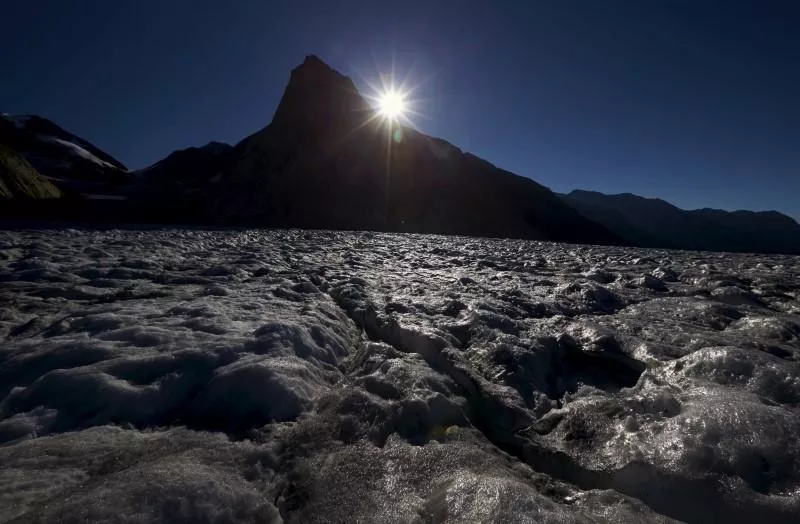Climate investment, mitigation under Covid-19
Unlike region, environmental health in Pakistan cannot get rid of threats
ISLAMABAD:At the outset of the current pandemic lies a major threat to climate investment. This unscathed part of our global society and economy, which is linked directly or indirectly to the prevailing economic health degradation, has been poisoning the integral societal part of the natural climate.
The threat is twofold – failing to invest enough in climate resilience and adaptation and snappy erosion of (regional and global) de-carbonisation efforts.
This article revolves around the former issue that is lagging behind climate targets and, more specifically, the halt to industrial emissions and shift to green/clean energy sources.
It would potentially drag Pakistani society to the brink of Covid-19 category of disaster, meaning the outbreak of life-threatening diseases. This leads to multifold industrial operations and the surge in (uncontrolled) harmful pollutants in open air.
Unlike most of the global societies, Pakistan’s scenario depicts and portrays an alarming picture in the face of environmental degradation. Unlike the regional trends of environmental health restoration, the environmental health in Pakistan could not get rid of existing and potential threats.
The Covid-19 outbreak and the lockdown period could not result in any safety measures (both in terms of policy and execution) to push the industrial stakeholders to opt for clean operations. Protecting somewhat clear air in urban centres finally remains a delusion.
The lockdown period could have been used for shift, partially if not wholly, to control industrial emissions of harmful pollutants and to alternative clean/green solutions. Thus, in the midst of efforts to save people from the poverty trap, the resumption of industrial operations is leading to massive and unprecedented emissions of harmful pollutants, in day time as well as in the night. The industries, little sensitive to climate health, are trying to catch up with the lost profit, so the emissions have again begun to saturate the air with impurities.
At the national level, a multimillion-dollar fund from bilateral and multilateral sources (ie the international climate change adaptation financing, World Bank, etc) has failed to take any adaptation measures.
Air quality – May-June 2020
Hence, within days after the resumption of industrial production, the mean summer temperature rests above the base period of multiyear mean. The country is yet again facing heat waves. Although first quarter of the year was favourable, there was a recent spike in temperature (3-6 degree Celsius above normal).
The Air Quality Index (AQI) at Particulate Matter (PM) 2.5 is wavering around 180 – which is unhealthy to inhale. At this level, as per the World Health Organisation (WHO), everyone may begin to experience health effects, whereas it poses more threat to the sensitive group.
The concentration of industrial pollutants (suspended particulate matters, SO2, NOx, Pb, CO2, and heavy metals) is going beyond the permissible limit set by WHO.
More alarmingly, low rainfall, decreased humidity, dust winds and alteration in wind velocity are providing favourable conditions for the pollutants to multiply the effect while traveling easily in all directions from the source – the industrial point.
The concentration of pollutants in open air is posing serious health challenges, especially to the sensitive groups. It needs to be mentioned that (sometime) short spells of wind are more dangerous for the neighbourhood of industrial zones as these short spells deposit toxic industrial chemicals at the shortest distance.
So, without differentiation, the catastrophic consequences of industrial emissions, which extend to chronic respiratory issues, acute irritation, gastrointestinal problems, maternal and infant health issues, etc, could raise the number of patients in the days to come.
Consequently, health concerns are intensifying due to uncontrolled and unmitigated industrial emissions, leaving no option for the patients but to break the months-long restrictions due to Covid-19 and go to hospitals and health units.
The questions remains whether the (already) stressed (both medical staff and limited resources) health sector of Pakistan could cope with and recover from this wave of diseases, if not the second wave of the pandemic?
Safeguarding society
The scenario calls for more efficient actions from the stakeholders concerned. Central and provincial governments need to refine and execute the clean/green production policy to halt the discharge of uncontrolled pollutants into open air.
The industrial stakeholders should also be obliged to take effective measures to curb emissions, also by availing global facilities like the Climate and Clean Air Trust Fund, Giz Reee project, EU ILES, Japan International Cooperation Agency (Jica)-funded air quality monitoring, etc.
The writer is associated with the Department of Development Studies (Climate Change and Development Research Group), School of Social Sciences and Humanities, NUST, Islamabad
Published in The Express Tribune, July 20th, 2020.
Like Business on Facebook, follow @TribuneBiz on Twitter to stay informed and join in the conversation.


COMMENTS
Comments are moderated and generally will be posted if they are on-topic and not abusive.
For more information, please see our Comments FAQ